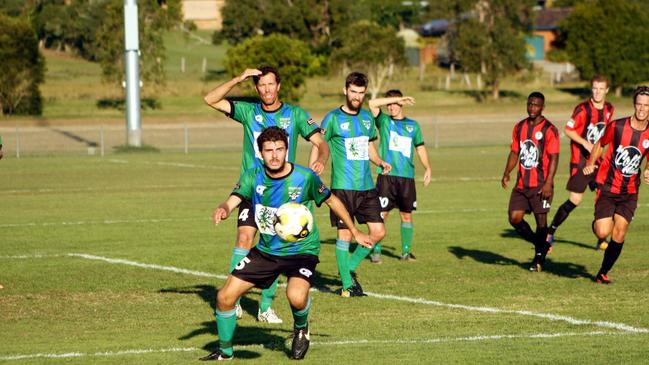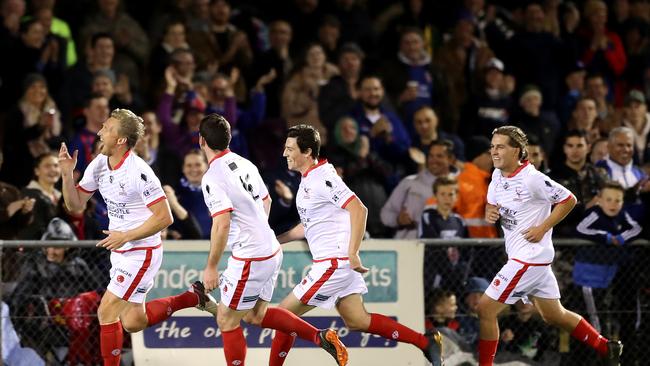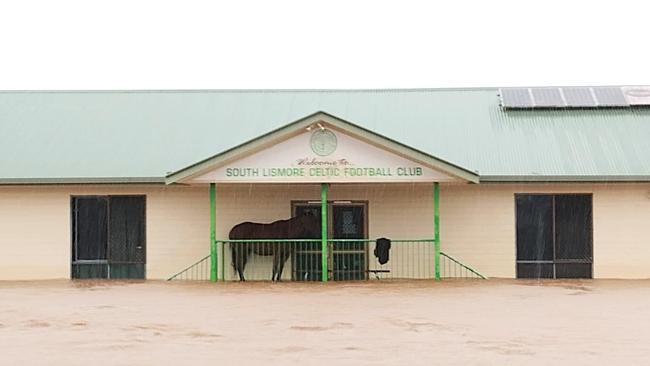Cost, grassroots and infrastructure: new NNSW Football chief lays out plans
After a months-long power struggle for control of Northern NSW Football, the new board has outlined its plans for the future of the game in the region.
Local Sport
Don't miss out on the headlines from Local Sport. Followed categories will be added to My News.
Reintroducing promotion-relegation, improving community football infrastructure, reducing the cost of playing and creating a truly statewide body – those are the main priorities for Northern NSW Football after the organisation’s new board met for the first time last week.
Following its first full board meeting since being elected in December, NNSWF announced that it had created four advisory groups designed to analyse different aspects of the game.
One group will be responsible for assessing the feasibility of reintroducing promotion and relegation into the NNSW NPL and other premier men’s competitions, while another will do the same for premier women’s competitions, including looking into the potential formation of a women’s second division.
The third group will turn its eye towards the Junior Development League and other elite youth pathways, while the fourth will focus on ways to improve community football at a grassroots level.
The first full meeting of the new board, led by chairman Mike Parsons, caps off a months-long power struggle for control at NNSWF.

It started in August, when the previous board endorsed recommendations that would have significantly changed the governance of football in the area.
The recommendations would have effectively dissolved the zones – such as Football Far North Coast, Football Mid North Coast, Macquarie Football and Newcastle Football, etc. – that run community football and brought more responsibility under the NNSWF’s remit.
The proposals were deeply unpopular with the zones and other football stakeholders, and over the course of the following months all board members – except for the newly elected Mark Trenter – either resigned or were voted out, with the new board elected at an extraordinary general meeting in December.
Longstanding CEO David Eland also resigned at the December 10 meeting.
“The reason that we were elected is that we don’t want NNSWF taking over all the zones,” says Parsons, whose board will prioritise the independence of the individual bodies.
“They do have their independent needs and wants and we need to collaborate. And I think the previous board, in sporting parlance, misread the mood of the dressing room, and here we are now.”
The advisory group looking into community football will in many ways look to support the zones run their own affairs, something Parsons says will be a case of “assisting locals to assist locals”.
“In a nutshell, my board is looking for the stakeholders to have more involvement in the decision-making process and be the masters of their own destiny, rather than being dictated to about how something should happen.”
A truly statewide body
In fact, rather being dominated by interests from Newcastle – the traditional powerbase of football in NNSW – the new board has a far greater geographical spread, led by Parsons, a long-time Football Mid North Coast official from Taree.
“The fact that we’ve got better regional representation just highlights the intricacies, the differences and the geographic issues that we face in the region in terms of distance,” he says.
“Being from an outlying regional area, no one knows that issue better than I do and my other board members who come from areas like mine.”
As part of decentralising the organisation and engaging with the various zones, Parsons has suggested taking key steering committee meetings on the road from time to time.
“I’d like to see us move out of Newcastle and go out to some of the zones and hold our meetings there – a bit like a state parliament coming to a country town every now and then.
“I think it’s important that we’re not seen as a Newcastle football group, because we’re not. We’re one of the largest sporting organisations in NSW and we cover a massive demographic. I think we just have to be more realistic in acknowledging the diversity of our stakeholders.”

When it comes to acknowledging the diversity of the football-playing public, Parsons says while much of the focus is rightly placed on elite competitions and junior development – including reintroducing promotion and relegation in the men’s NPL competition, the body’s premier league – his board’s mantra will be to give grassroots football the attention it deserves.
“Around 98 per cent of our players play what I call ‘Saturday park football’, be that on a Tuesday night, Friday night, Saturday or a Sunday. Most of our players play for social engagement, to be part of their community, for exercise, for so many other benefits,” he says.
“If we can develop better footballers at grassroots level, their enjoyment is better, and it also gives an opportunity for those people who may not have the monetary ability to go through high-performance pathways to still be identified.
“If we’re looking after grassroots and producing better footballers and better people all round, potentially we produce more Socceroos and Matildas and referees who can sit on national panels.”
Easing the cost
Indeed, attempting to address the cost of playing football, especially in the elite pathways, is another area of focus for the new board.
The issue has attracted plenty of interest in recent years, with the parents of talented young footballers forced to pay up to $2000 per year to enrol them in JDL teams, leading to fears that the sport may lose some of the best young athletes on account of it being too expensive.
“They’re paying extra for some of those technical advisors and coaches, and to be perfectly frank, we don’t have the numbers of coaches out there to fulfil the requirements,” says Parsons, whose advisory group will look into whether there’s a better way to run these programs.
“As altruistic as it sounds, I’d be looking to give opportunities to those who are financially disenfranchised under the current system. They could be the potential Sam Kerrs and Tim Cahills of the future, but they just don’t get the opportunity because of the cost of high performance.”

Despite these aims, Parsons is conscious of the broader structural issues that result in higher registration fees for junior footballers as opposed to other sports – not just in northern NSW but all over the country.
“The difference is that we fund our game and our national teams from the ground-up, whereas the AFL and NRL have a different funding model because of TV rights, media rights,” he says.
However he hopes that the extra money generated by the Socceroos’ World Cup performance and this year’s Women’s World Cup, to be hosted in Australia and New Zealand, could help trigger a shift.
“Hopefully over the next few years that funding model can change, and that is what the community football reference group is going to look at.”
Infrastructure and facilities
In addition to the cost of playing, Parsons says that working with authorities to improve facilities is a huge priority for football, which is the number one team sport in terms of participation, in not only northern NSW but also Australia.
“One of our main goals is to get governments to provide the local grounds with better infrastructure, so we can actually provide more fields and better facilities, because a lot of our clubs are tapped out and can’t handle any more players – even if they wanted to register,” he says.
Aside from simply affecting grassroots teams with things as simple as not having enough toilets or change rooms, Parsons says that infrastructure deficits are also hindering the potential for teams from regional areas to enter into the NNSW NPL, the premier men’s competition.
At present, all teams in the men’s NPL are from either Newcastle, Lake Macquarie or the lower Hunter, with the criteria related to infrastructure and facilities seen as a major hurdle for clubs from outside these areas.
“For Football Mid North Coast, if one of our clubs or even a zone was to enter a team, we’d have to have a stadium, we’d have to have a players’ race, we’d have to have certain facilities, and that all forms part of it,” says Parsons.
“It’s not just about the cattle that we’re putting on the park – it’s about total infrastructure. Over the next number of years I would certainly love to see that expanded and opportunities given to regional teams.”

The matter of infrastructure is of particular concern for many clubs in the Northern Rivers, many of which saw their fields, clubhouses and other key infrastructure destroyed in last year’s floods.
Last year NNSWF offered concessions on playing fees and sent local authorities thousands of dollars of gear and resources, while three football zones in the Hunter all sent $10,000 each to be put towards the worst-affected clubs.
Despite this support, Football Far North Coast – the body that administers the code in the Northern Rivers – lost around 1000 of its pre-flood total of 7000 registered footballers, which has emphasised the need for ongoing support as the region continues its recovery.
“We’re always doing that, and in the background we’ve got a team of NNSWF staff who are engaging with politicians for grants and engaging with local councils and communities,” says Parsons.
“Fundraising support – we’re certainly doing that internally, and anytime anyone is reaching out for help and support, we’re there for them.”




